Home> Company News> How a Pressure Compensated Pump Works: An Introduction to the Technology
- AddressNorth Tan Street, Jinan,Shandong
- Factory Address123 Ubi Ave 3 #12-30 Frontier Singapore 408867
- Worktime9:00-18:00(Beijing time)
- Phone(Working Time)86 0531-8299 9952
In this article, we will explore the topic of pressure compensated pumps and their importance in various industries. Pressure compensated pumps are an essential component of hydraulic systems, and understanding how they work is crucial for efficient and safe operation. Throughout this article, we will cover the different components of pressure compensated pumps, how they work, their advantages and disadvantages, and their applications in different industries. By the end of this article, you will have a clear understanding of the importance of pressure compensated pumps and their role in hydraulic systems.
Components of a Pressure Compensated Pump
Pressure compensated pumps have several components that work together to maintain a constant pressure in the system. Understanding the function of each component is important for proper operation and maintenance of the pump. Some of the key components of a pressure compensated pump include:
-
Pump housing: The pump housing contains the rotor and other internal components of the pump. It is typically made of durable materials such as cast iron or aluminum.
-
Rotor: The rotor is the main component that rotates within the pump housing, creating suction and pressure in the system.
-
Pressure compensator: The pressure compensator is a key component that helps maintain a constant pressure in the system. It regulates the flow of fluid in the system based on the pressure, adjusting the pump output as needed.
-
Relief valve: The relief valve is a safety feature that opens when the pressure in the system exceeds a certain threshold. This prevents damage to the system and ensures safe operation of the pump.
-
Control system: The control system is responsible for regulating the pressure in the system. It typically consists of sensors, valves, and other components that adjust the pump output as needed.
-
Filtration system: The filtration system removes impurities and contaminants from the fluid, ensuring smooth and efficient operation of the pump.
Understanding the function of each component of a pressure compensated pump is essential for safe and efficient operation. Regular maintenance and inspection of these components can help prevent breakdowns and prolong the life of the pump.
How Pressure Compensated Pumps Work
Pressure compensated pumps are designed to maintain a constant pressure output, regardless of the system load. In other words, they provide a consistent flow of fluid, even when the system is subjected to changes in pressure or demand.
The key component of a pressure compensated pump is the pressure compensator, which works by continuously monitoring the system pressure and adjusting the pump output accordingly. The pressure compensator consists of a piston, a spring, and a control spool that regulates the pump output.
When the system pressure is below the desired setpoint, the spring pushes the piston up, which opens the control spool and allows fluid to flow into the system. As the system pressure rises, the piston is pushed down, which closes the control spool and restricts the flow of fluid. This process continues until the system pressure reaches the desired setpoint, at which point the pump output is maintained at a constant level.
In addition to the pressure compensator, pressure compensated pumps also typically include a relief valve and a control system. The relief valve acts as a safety mechanism to prevent the system pressure from exceeding a predetermined limit. If the system pressure exceeds this limit, the relief valve opens and allows fluid to bypass the pump and return to the reservoir.
The control system is responsible for monitoring the system pressure and providing feedback to the pressure compensator. The control system may include sensors, transducers, or other devices that measure the system pressure and provide input to the pressure compensator to ensure that the pump output remains constant.
Overall, the combination of the pressure compensator, relief valve, and control system work together to provide a reliable and efficient hydraulic system. By maintaining a constant pressure output, pressure compensated pumps can help to reduce wear on the system components and improve overall system efficiency.
Advantages and Disadvantages of Pressure Compensated Pumps
Pressure compensated pumps have several advantages over other types of pumps, but they also come with some disadvantages. Understanding both the advantages and disadvantages can help you determine if a pressure compensated pump is the best option for your application.
Advantages:
- Improved efficiency: Pressure compensated pumps are designed to maintain a constant pressure, which reduces the amount of energy required to operate the system. This can result in improved overall efficiency and reduced energy costs.
- Reduced wear on the system: Because pressure compensated pumps maintain a constant pressure, there is less stress on the system, which can result in reduced wear on the components over time.
- Increased precision: Pressure compensated pumps are highly accurate and can maintain a constant pressure even when flow rates vary, which can result in more precise system performance.
- Reduced noise: Pressure compensated pumps are often quieter than other types of pumps, which can be beneficial in applications where noise is a concern.
Disadvantages:
- Increased complexity: Pressure compensated pumps are more complex than other types of pumps, which can make them more difficult to install and maintain.
- Increased cost: Because pressure compensated pumps are more complex, they often come with a higher price tag than other types of pumps, which can be a disadvantage for some applications.
- Potential for leaks: Pressure compensated pumps use a pressure compensator, which can be more prone to leaks than other types of pumps. Proper maintenance and regular inspection are important to ensure the system remains leak-free.
Overall, pressure compensated pumps can be a highly effective solution for many applications, but it is important to carefully weigh the advantages and disadvantages before making a decision.
Applications of Pressure Compensated Pumps
Pressure compensated pumps are used in a wide range of industries and applications where a constant pressure output is required. Here are some common applications of pressure compensated pumps:
-
Construction Equipment: Pressure compensated pumps are used in various construction equipment such as excavators, loaders, bulldozers, and cranes. These pumps help to provide consistent hydraulic power to the machinery, resulting in better efficiency and productivity.
-
Agriculture: Pressure compensated pumps are commonly used in agricultural machinery such as tractors, combines, and sprayers. These pumps provide a constant flow of hydraulic fluid to power the equipment, resulting in improved performance and reduced wear on the system.
-
Manufacturing: Pressure compensated pumps are used in various manufacturing applications such as injection molding machines, hydraulic presses, and conveyor systems. These pumps provide the necessary power to operate the equipment at a consistent pressure, resulting in improved efficiency and reduced downtime.
-
Aerospace: Pressure compensated pumps are used in various aerospace applications such as flight control systems, landing gear systems, and hydraulic actuators. These pumps provide a consistent flow of hydraulic fluid to the systems, ensuring smooth and reliable operation.
-
Oil and Gas: Pressure compensated pumps are used in the oil and gas industry to power various equipment such as drilling rigs, wellhead control systems, and subsea equipment. These pumps provide consistent hydraulic power, ensuring the safe and efficient operation of the equipment.
-
Marine: Pressure compensated pumps are used in various marine applications such as winches, steering systems, and hydraulic lifts. These pumps provide the necessary power to operate the equipment at a constant pressure, resulting in improved performance and reliability.
In conclusion, pressure compensated pumps are widely used in various industries and applications where a constant pressure output is required. Understanding how these pumps work and their applications is essential to ensure proper operation and maintenance of hydraulic systems.
Pressure compensated pumps have revolutionized the hydraulic industry with their ability to maintain a consistent pressure, thereby improving efficiency and reducing wear on the system. As previously discussed, understanding the different components of a pressure compensated pump and how they work together is important in order to optimize its performance.
In addition to the technical aspects of pressure compensated pumps, it is also important to understand their applications in different industries. These pumps are used in a wide range of applications, from agriculture and construction to aerospace and defense.
One example of their application is in the agricultural industry, where pressure compensated pumps are used in irrigation systems. These pumps are able to maintain a constant flow rate, ensuring that crops receive the right amount of water without wasting resources. In the construction industry, pressure compensated pumps are used in heavy machinery such as excavators and cranes, where precise movements and control are necessary.
In the aerospace industry, pressure compensated pumps are used in hydraulic systems that power landing gear and control surfaces. Their ability to maintain a consistent pressure is critical in ensuring safe and reliable operation of the aircraft.
Overall, understanding the applications of pressure compensated pumps can help users choose the right pump for their specific needs, and can also highlight the benefits of using these pumps in different industries. By optimizing the performance of pressure compensated pumps and selecting the right pump for the job, industries can improve efficiency and reduce downtime, ultimately resulting in increased profitability.


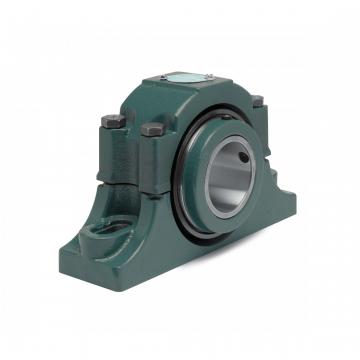 Mounted Tapered Roller Bearings P4B-EXL-212RE
Mounted Tapered Roller Bearings P4B-EXL-212RE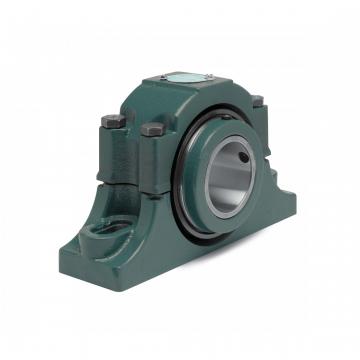 Mounted Tapered Roller Bearings P4B-EXL-400R
Mounted Tapered Roller Bearings P4B-EXL-400R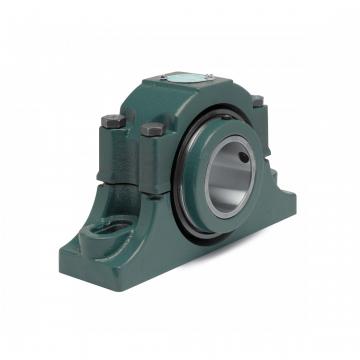 Mounted Tapered Roller Bearings P4B-EXL-400RE
Mounted Tapered Roller Bearings P4B-EXL-400RE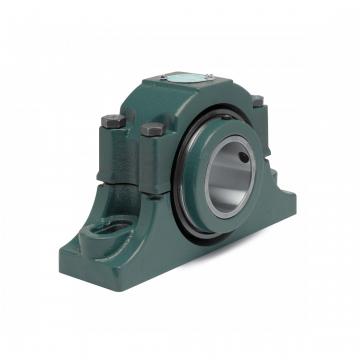 Mounted Tapered Roller Bearings P4B-EXL-315RE
Mounted Tapered Roller Bearings P4B-EXL-315RE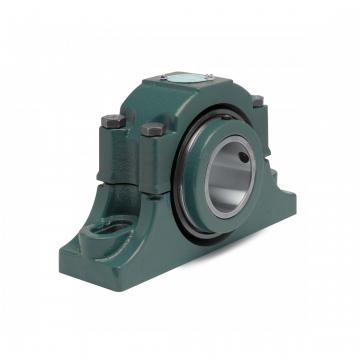 Mounted Tapered Roller Bearings P4B-EXL-207RE
Mounted Tapered Roller Bearings P4B-EXL-207RE